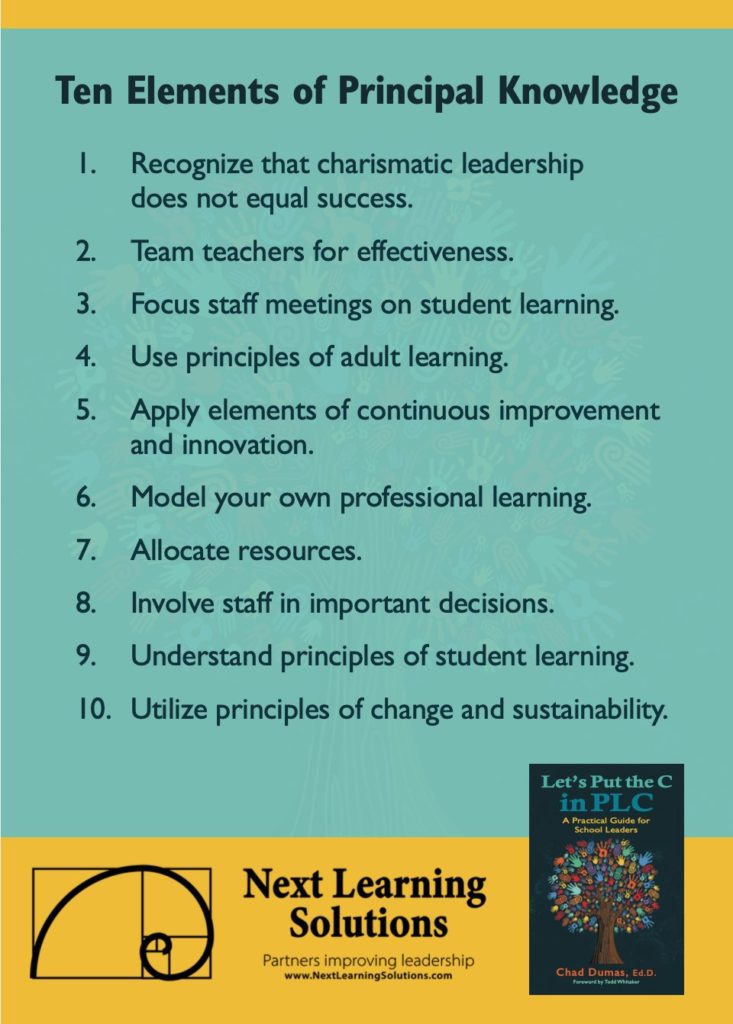To Sink or To Sail:
The One Key
July 13, 2021
It’s been said that if you want to go fast, go alone.
If you want to go far, go together.
In terms of building a collaborative environment, it might seem redundant to say that it needs to be done together. And going together will most definitely get you further.
If I can be blunt, if you want to sink this work (and yourself!), do it alone.
If you want to be successful and have a long-term impact, to sail your ship, build the capacity of each other to improve our practice and results for students. Together.
What’s the one key difference between sinking or sailing? It’s involving staff in decision-making.
There are two keys to effectively involving staff in decision-making (Element Eight):
A Leadership Team
Whether you call it a school improvement team, guiding coalition, liaisons, faculty senate, or any-other-name-you-want doesn’t matter. What matters is that you have representatives from the staff who meet with designated leaders (principal, assistant principal, dean, etc) on a regular basis.
The importance of this guiding coalition cannot be overstated. (STRONG STATEMENT ALERT!!). I can guarantee that whatever you are leading WILL fail if you do not have a guiding coalition leading this work, or any initiative, for that matter.
Having the guiding coalition is just the first step. This group of individuals needs to then be grounded in implementation science (don’t you love that phrase?!).
Implementation science basically says that those who are leading an initiative need to be well-verses in two key areas: 1) What they are leading, and 2) How to lead change.
Those who are leading an initiative need to be well-versed in two key areas:
1) What they are leading, and
2) How to lead change
The first area seems pretty obvious. If the guiding coalition is leading standards-based grading practices, they better understand standards-based grading practices. If quality reading instruction is the initiative, they must know what quality reading instruction looks and sounds like. If they are leading the work of becoming a true professional learning community, they had best have a solid grasp of what being a PLC entails. You get the point. Make sure that this team knows what they are leading.
Second is not so obvious, and where most schools and districts sink. The guiding coalition needs to understand change.
Unfortunately, most of us have no clue what it means to lead change. That there are theories, models, and processes that can be helpful. Specific tools like an Innovation Configuration Map and the Levels of Use and Stages of Concern from CBAM (Concerns-Based Adoption Model) are incredibly powerful.
Make sure you build the capacity of each other to lead change, not just understand the specific change being led. Of course, there’s no need for the highest levels of expertise on either, just a solid grasp with a mindset of learning by doing.
Check out this GoogleDoc for a listing of a number of Change Theories, Models, and Processes, together with links to resources to learn more about each one
Be sure to visit the website for CBAM: Concerns-Based Adoption Model for information on specific tools to help you lead change in your setting.
Opportunities for Input
A structured leadership team is part of the equation to involve staff in important decisions. The other part is being sure that there are opportunities where feedback is 1) Encouraged, 2) Expected, and 3) Implemented.
Of course there are many details to this work, and our non-verbals can say a lot about whether we really want input from our staff. There are entire books on ways to elicit feedback.
Thomas van Soelen’s book is an excellent resource that comes right to mind that is absolutely amazing! The Thinking Collaborative also has incredible resources.
Grab them, understand them, and use many ways to get input from your staff.
Specific Strategies
Two very simple ways that I have used involve the fist-to-five strategy, as well as the use of sticky notes at the end of meetings.
With fist-to-five, this can be formal through paper collected from staff, or informal use of hands in the air. The general break-down of a fist to five “vote” works like this:
5: Put me in charge! I’m really excited about this.
4: I’m really excited and support this work, but please don’t put me on the front lines.
3: I’ll support it, but not terribly pumped.
2: I do not support this and am actually against it, but will support the will of the group.
1: I am fully against this, but will not sabotage it.
0 (or fist): You can count on me to sabotage this work.
Sticky notes at the end of meetings are also a fantastic quick way to get staff feedback. Choose your prompt that gets the feedback you need. Some examples might be: What excites you about what we learned today? What concerns do you have? What stumbling blocks should we be thinking about? What are some of the reasons we should NOT do this?
You get the idea. Create a prompt that gets you the feedback that you need.
Decision-Making
Depending on the size of the staff, the number of structured opportunities to elicit feedback varies. I provide a story in chapter eight of my book (Let’s Put the C in PLC) that might get your juices flowing, and here is a link to that excerpt with a graphic depiction of how to possibly organize for staff involvement.
All the structures in the world won’t work, however, unless you are clear about the types of decisions being made. We’ll pick that up next time, because I think it’s important enough to deserve an entire post about it.
In the meantime, let’s set sail. Together.
Questions for Reflection
- To what extent do you involve staff in decision-making?
- What steps might you take to better do this?
Do you have a story you’d like to share?
Comment below
(or email [email protected])
Know of someone who would appreciate this post? Share it with them!
Interested in New Posts?
(I won’t spam you–just once per month)




Please notify me of new post. Thanks for the DM
You bet!